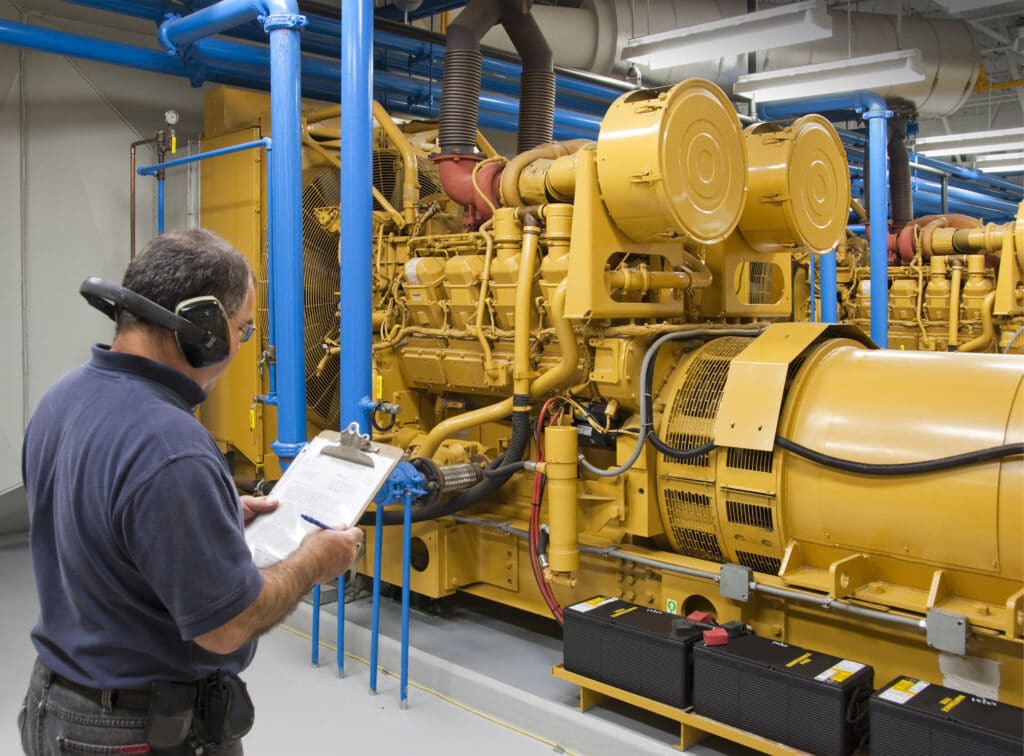Industrial generators have various working parts that contribute to the production of electrical energy. When people hear the word alternator, they often think of the component in their car engine that helps keep the battery running. This association is accurate, a vehicle’s alternator keeps things running by powering the electrical components as the car is in motion or idling. It is thanks to the alternator that your headlights are supplied with direct current, as well as your windshield wipers, and radio. It also charges your car battery as the car runs.
When it comes to industrial alternators, their role is similar. They carry a lot on their shoulders and may not always receive due credit.
So why should people care about an industrial generator’s alternator?
The Birth of Electric Motors
In the past, we’ve written about the wonders of industrial generators and the Father of electromagnetism and electrochemistry— the British inventor Michael Faraday. His most revered contribution to the history of industrialization was the revered electric motor, which today continues to power so much of our infrastructure.
The two principles that drove Faraday’s discoveries included:
- Electromagnetic rotation: Faraday discovered how to produce a magnetic force on a wire or conductor by inducing an electric current.
- Electromagnetic induction: The produced current could then be traced as it moved around the wire and rotated, which produced a current.
These two principles led Faraday to the development of the first generators, transformers, and electric motors.
Fun fact: Elon Musk’s electric car company was almost called Faraday. Musk revealed that this had been his second choice for the company name.
What Does This Have to Do With the Alternator?
Nikola Tesla, often considered one of the fathers of electrical engineering, took Faraday’s ideas of electromagnetic induction and ran with it. This idea would eventually contribute to the discovery and experimentation of alternating currents, which beat out Edison’s direct current. The famous head-to-head is often known as the current wars.
Tesla developed an electromechanical device that converts mechanical energy into electrical energy. It did this via electromagnetic induction in the form of alternating currents.
The Alternator in an Industrial Generator
In an industrial generator, the alternator is the component responsible for producing the electrical output that leads to the production of electricity. Also known as the “genhead” this reliable component carries a lot of the electrical weight. It produces, after all, the electrical output from the initial input from the engine. The alternator is housed within the generator housing unit that also contains the stator and rotor.
The housing unit in many generators is made of metal (sometimes plastic). Metal housing units are far more resistant and popular because they resist the harsh conditions a lot better. The all-metal designs will have better resilience and durability. These plastic housing units might get misshapen over time. This exposes the alternators ‘innards,’ which causes damage and dangerous conditions if not properly maintained.
The alternator is composed of the:
- Stator: This bad boy is a stationary component and it is composed of coils. These coils contain electrical conductors.
- Rotor/armature: This is the part of the alternator that moves and is in charge of producing the magnetic field.
Alternators today can create magnetic fields through various processes including:
- Via induction: Induction is used in larger alternators.
- Through permanent magnets: This method can be seen in smaller units.
- By using an exciter: The exciter is a source of direct current that uses a different method to energize the motor.
Industrial Alternators vs Your Vehicle’s Alternator
If pitted against each other in a boxing match, your vehicle’s alternator would put up a good fight but would nonetheless run out of energy way before any industrial alternator would.
It might go without saying that an alternator used in industrial applications has to produce heavier output. Industrial alternators must be designed to provide continuous work with consistent high outputs without wear and tear. Vehicle alternators are designed for fuel efficiency and weight reduction so they are made with more lightweight materials and constructed to handle smaller electrical loads.
Early alternators in vehicles required up to two horsepower of engine power to produce a single horsepower of electric current. The alternators of today are, of course, far more efficient than that.
Get Industrial Generator and Alternator Repair at Remsa USA
We know that industrial generators are a key part of the daily operations of many industrial plants or manufacturing plants. Within that industrial generator is housed a powerful alternator that is doing the heavy lifting in the conversion of energy.
When it comes to maintenance or generator repair, call the experts at Remsa USA.
